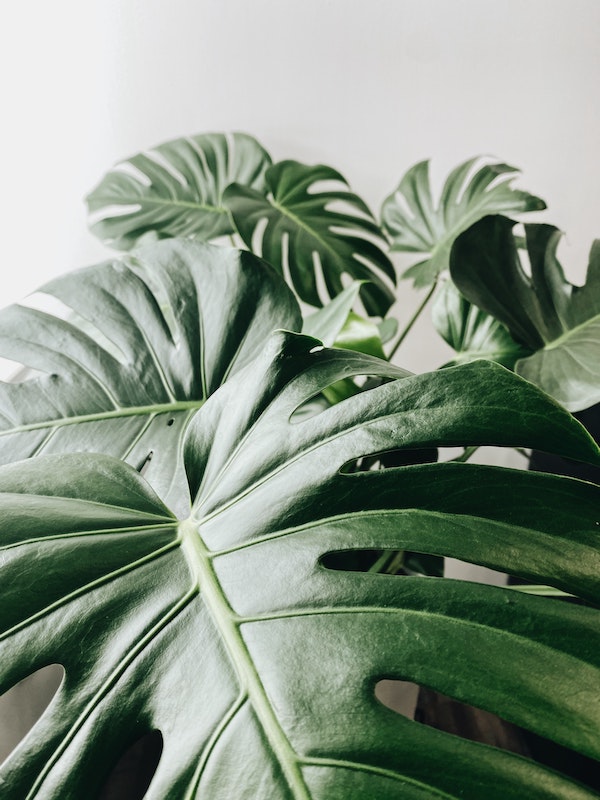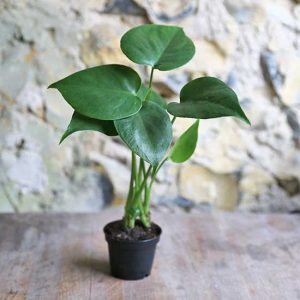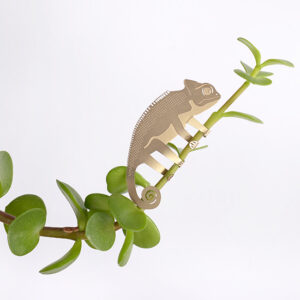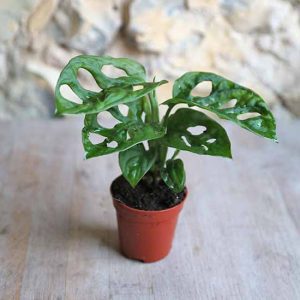HOW TO CARE FOR YOUR MONSTERA DELICIOSA (SWISS CHEESE PLANT)
THE SWISS CHEESE PLANT
Monstera deliciosa
One of the most popular houseplants in the world, the dramatic foliage of the Swiss Cheese Plant is a bonafide crowd-pleaser. These distinctive tropical plants delight their owners with the unusual patterns of holes on their leaves and their lush green colouration. A type of tropical philodendron, the Swiss Cheese Plant is perfect for a novice and an expert alike!

Where Does It Come From?
In the wild, this beautiful tropical plant grows as a vine and is native to the wet tropical regions of the Americas. These plants grow under the forest canopy in hot and sweaty conditions!
Why Should I Get One?
- This gorgeous plant is insanely Instagrammable! It brings so much laid-back tropical style to your space and is such an easy way to brighten up a dull room.
- The Swiss Cheese Plant is remarkably unfussy considering how exotic looking it is. These plants are quite tolerant so will survive well while you try and achieve the ideal conditions for it in your home.
- Pest-resistant and generally disease free, these plants are easy to keep healthy.
- This popular house plant is super easy to propagate, so you can make more of them without spending a penny!
How Big Can It Grow?
Left to grow unrestricted in its natural habitat, the Swiss Cheese Plant can grow to an enormous 70-feet tall. Supporting itself by growing around the trunks and branches of other forest plants, these vines are the opportunists of the tropical forest and entwine themselves with their neighbours to grow towards the sunlight. Kept as an indoor plant in good conditions, they can reach good sizes in the UK too! As the plant grows taller, you will need to stake it for additional support. Leaf size also tends to increase as the settles in to a new home.
Where Should I Keep It?
Growing under the canopy of the tropical forest, the Swiss Cheese Plant is used to dappled light and so prefers to be positioned in indirect light when kept indoors. Direct light will cause the plant problems quite quickly and can leads to the leaves becoming scorched. On the other hand, filtered brightness is important and the plants will not develop those sought-after leaf holes if left somewhere with no enough light for it. Keeping the temperature moderately high will also help, as the plants can react poorly to being exposed to a chill or a draught. Being a tropical plant, these little beauties prefer humidity but will tolerate drier air than many similar species. Misting can help to replicate these humid conditions but it isn’t entirely necessary.
Like with many other tropical plants, the foliage of the monstera contains calcium oxalate crystals which are toxic to pets and people alike. If you have small children or curious pets, keep them away from these plants as they can cause irritation, vomiting and other serious health complications.
How Often Should I Water It?
Swiss Cheese Plants appreciate generous watering – water these plants until the water runs out the bottom and then wait until the top few inches feel dry before watering again. Don’t overwater—that’s a common mistake with this plant. As with other tropical species, ensure that drainage in your container is good. No tropical plants enjoy having soggy roots! If you want to boost growth even more, a balanced liquid fertiliser applied sparingly during the summer months can be helpful.
Although this stunning tropical specimen may look like a diva, the monstera deliciosa is amazingly chilled out. Resistant to pests and tolerant of a novice’s experimentation, these plants are also often adaptable enough to flourish anywhere in the house. Adding one to your collection is never a bad idea.



